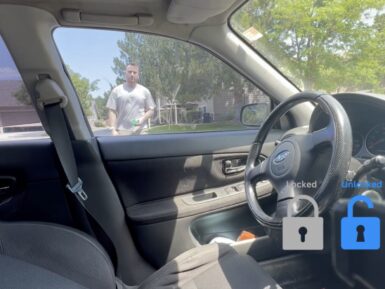
Overview
Utilizing Arduino's unique 'Panini Concept' — where designers pick up a MKR board, then mix-and-match it with the desired shields and carrier boards to create custom hardware configurations for IoT projects as if they were crafting a sandwich! The IoTerrific bundle includes the Arduino MKR WiFi 1010, plus the MKR MEM Shield and MKR Connector Carrier, making it one of Arduino's most popular 'combos' and providing you with a terrific starting point for designing your next IoT solution. Availble for a limited time period with a special 'combo' price of $63,99.
- 1 x Arduino MKR WiFi 1010 - Featuring the flexibility of the ESP32 module from u-blox and its low power consumption, the MKR WiFi 1010 enables you to accelerate and simplify the prototyping of WiFi-based IoT applications. The MKR WiFi 1010 features the smae standardized, modular form factor as the rest of the MKR family, and is consists of three main blocks:
i) Microchip ATSAMD21 MCU based on an Arm Cortex-M0+ processor
ii) u-blox NINA-W10 series low power 2.4GHz IEEE 802.11 b/g/n Wi-Fi
iii) ECC508 CryptoAuthentication
The design includes a Li-Po charging circuit that allows the MKR WiFi 1010 to run on battery power or external 5V, charging the Li-Po battery while operating on external power - switching from one source to the other is done automatically.
- 1 x MKR MEM Shield - Short on memory? the MKR MEM Shield can help. It adds an additional 2MB flash memory and MicroSD storage to go with your MKR board.
- 1 x MKR Connector Carrier - Allows you to connect several Seeed Studio Grove modules to your Arduino board; enabling you to build real systems quickly and easily for your IoT prototype.
Features:
Interface with up to 14 Grove Connectors
Analog inputs six at 5V
Digitial input/output six at 5V
Other connectors one 5V I2C, one 5V UART
Arduino IoT Cloud Compatible
Resources for Safety and Products
Manufacturer Information
The production information includes the address and related details of the product manufacturer.
Arduino S.r.l.
Via Andrea Appiani, 25
Monza, MB, IT, 20900
https://www.arduino.cc/
Responsible Person in the EU
An EU-based economic operator who ensures the product's compliance with the required regulations.
Arduino S.r.l.
Via Andrea Appiani, 25
Monza, MB, IT, 20900
Phone: +39 0113157477
Email: support@arduino.cc
Get Inspired
Robot using Arduino Nano 33 BLE Camera Shield.

A lot of newer cars have a really nifty feature called “proximity unlock,” which automatically unlocks the doors when the driver approaches while carrying their key fob. When paired with a push-to-start ignition switch, the driver never has to take their keys out of their pocket. But Nick’s 2004 Subaru STI is too old to have come with that feature from the factory, so he used a couple of Arduino boards to create a DIY proximity unlock system. Car manufacturers need to pay serious attention to security when designing their access and ignition systems, but Nick had a bit more freedom. It is unlikely that any thieves would suspect his car of possessing a feature like this and so they wouldn’t even bother trying to hack it. Nick’s proximity unlock works by evaluating the received signal strength indicator (RSSI) of Bluetooth® Low Energy connection. If all else is equal, RSSI is inversely proportional to distance and that makes it useful for rough proximity detection. An Arduino Nano 33 BLE inside the car unlocks the doors when it has an active BLE connection with an RSSI over a set threshold. It unlocks the doors by shorting the switch with a 12V relay and it receives power from the car’s 12V system through a buck converter. The driver-carried device (equivalent to a key fob) can be either another Nano 33 BLE or Nick’s smartphone. In fact, it can be any device with a BLE adapter, so long as it can connect to the in-car Arduino with the proper device name. Now, Nick can enjoy his classic car and the convenience of proximity unlock.










